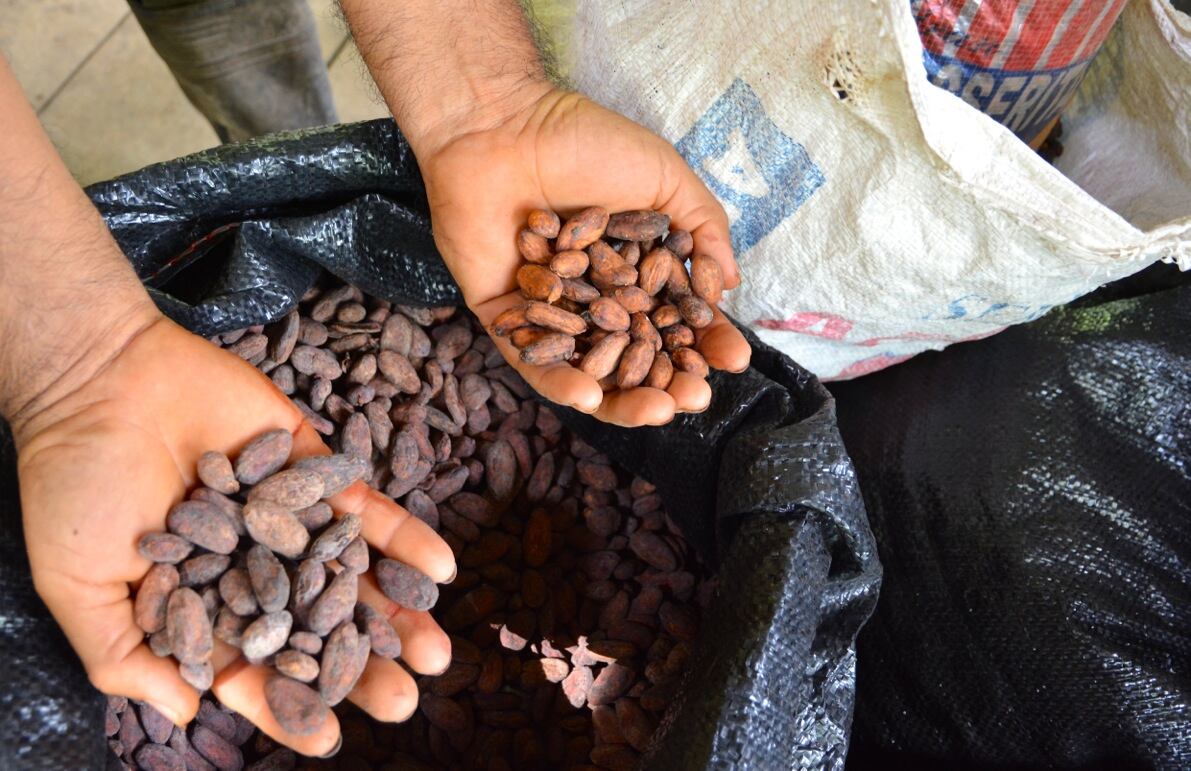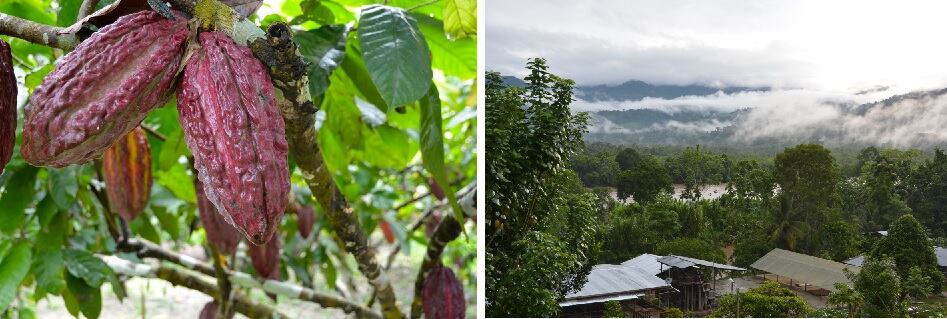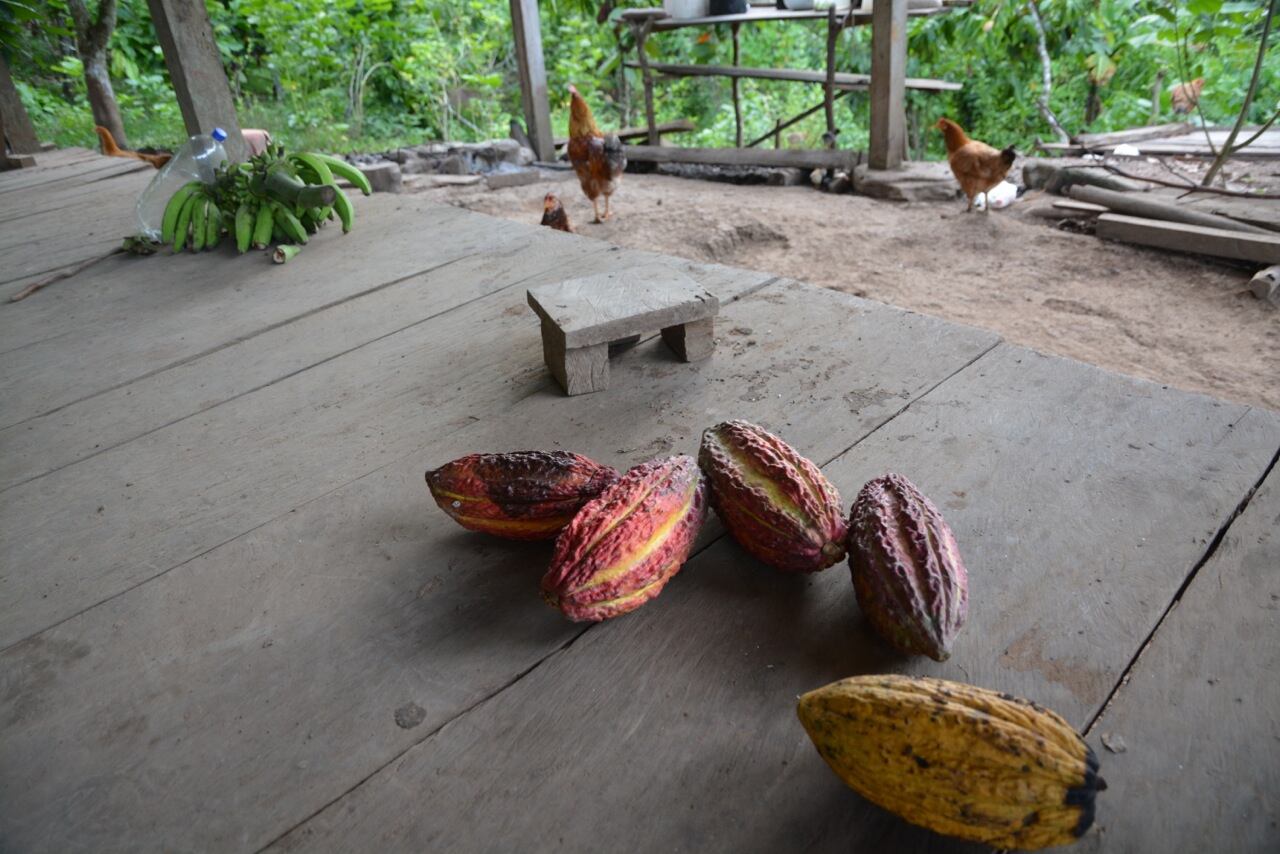The chocolate firm, founded last year by two former corporate cocoa sourcers with a vision of changing the chain of command within the industry, has launched an assortment of premium chocolates made from an original cocoa variety developed by one of its producers.
Cocoa variety CYP-99
The firm’s “Juanita” range will be its second assortment made from CYP-99, a cocoa variety developed by one of the company’s producers – and minority shareholders – Jorge Yoplac.
Yoplac, like 34 other cocoa producers on the Huayabamba River in Peru’s San Martin province, joined Christoph Inauen, formerly with Swiss supermarket chain Coop’s Halba chocolate brand and Eric Garnier of French firm AlterEco, to establish Choba Choba.
CYP-99, or Cacao Yoplac Pucallpillo, named after the community where his plantation is located, is created by grafting native Forastero and Criollo varieties found locally onto the widely grown CCN-51 hybrid.
The result is a more aromatic bean than the disease-resistant CCN-51, imported to Peru in the late 1990s as part of a crop-replacement program supported by Peru’s agriculture ministry and USAID.
Experimenting for 17 years
Yoplac told ConfectioneryNews that while most growers planted the Ecuadorian hybrid that the program offered them, in 1999, he started to experiment with native varieties he found growing in the area.

“I have been working for 17 years on mixtures with native cocoa varieties, so that others can enjoy them,” he said.
Through cross planting, CYP-99 retains the hardiness and high yield characteristics of CCN-51.
Like many other producers on the Huayabamba River, the cocoa farmer joined Acopagro, Peru’s largest cocoa cooperative. But when he proposed CYP to organization’s management, he said they were not interested, and he was expelled from the group.
Gonzalo Rios, general manager at Acopagro when asked about the incident wrote by email to ConfectioneryNews that “Marketed products need to be of interest to clients, and if this is not the case, there is no sense in developing a product (if it doesn’t have a market).”
Approximately 95% of Acopagro’s production is exported to processors, including Barry Callebaut, Italy’s ICAM, AlterEco and others.
Yoplac reflected on the current situation: “We have lost our native plants to CCN-51, but now the demand is for native varieties.”
Choba Choba’s owners
While Choba Choba’s European cofounders presently retain a majority holding in the company, the goal is that the producers’ minority position increases, sales permitting, until they own the bulk of the company.
“The chocolate revolution means that the producers are now owners of a company and are participating in the sale of the chocolate,” said Inauen.
The Swiss said at Choba Choba, producers “are no longer selling to intermediaries or cooperatives, not knowing where their cocoa goes, but they are literally shareholders of a chocolate brand, selling their chocolate –their own chocolate – directly to the final consumer.”

Cost of the CCN-51 hybrid
During a recent general assembly of the cocoa producers, participants voted on the price to sell cocoa to the company, before it is processed at Felchlin, a premium chocolate processor, in Switzerland.
The price was agreed at 50-90% above going market prices.
The chocolate brand

Choba Choba – named after a Quechua motto for communal work ethics, meaning I help you, you help me – sells its chocolate boxes over the Internet. In March, the brand first marketed chocolates produced from Yoplac’s own cocoa.
Choba Choba’s marketing is focused on creating a close link between producer and end buyer, with video messages and photos from producers regularly posted on the company’s social media pages.
An assortment of three chocolate bars sells for CHF 30 ($30), a high price, Inauen admits.
But for him, it is time that consumers paid the real value for raw materials and the food that they eat.
Since its launch in November last year, Choba Choba has registered till May sales of CHF 350,000 ($353,000), and aims to reach CHF 600,000 ($606,000) by year-end.
